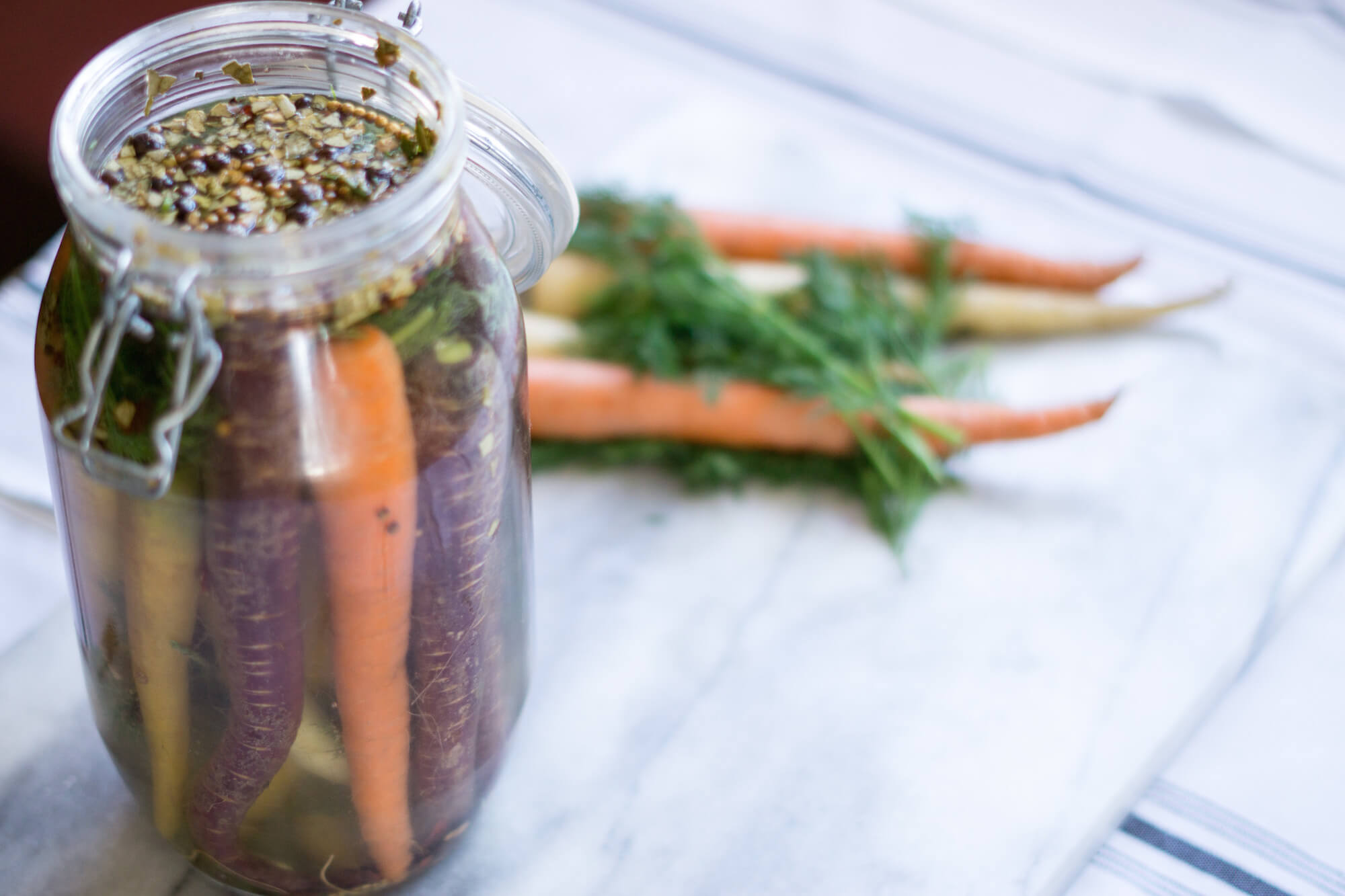Long before freezers, long before canning and artificial preservatives, people in the far reaches of Europe lived or died based on their ability to save and preserve foods for winter. That type of pressure brings out great ingenuity and not only did the people of the Nordic learn to preserve their foods, they learned to do it well and to make it tasty.
There were a number of preservation methods but one that has continued to be popular, even today, is to pickle the bounties of the summer harvest.
Pickling is the process of preserving foods, both meats and vegetables, in a liquid such as a brine, vinegar, or even in sour whey. These liquids create an environment where harmful bacteria have a difficult time growing, preventing the food from spoiling for days, months, even years in some cases.
Being able to save and eat vegetables and meats throughout the long Nordic winter was incredibly helpful and pickled products were an important part of the Nordic diet.
Long after the invention of the refrigerator, many Nordic recipes will still call for either a garnish or side of something pickled. The acidic flavor is often balanced out in Nordic recipes by something a bit sweet and the pickled texture and flavor is something most people in the Nordic quite enjoy.
While in the past pickled products would often be preserved for weeks or months before being used, today most recipes call for a much lighter, shorter pickling. This makes it much easier for the average home cook to make up their own batch of pickled vegetables without needing to wait weeks for a very strong, pickled flavor.
Pickling is actually not a very difficult process and all you really need is some good vegetables (or meat) and your preservation liquid.
Certain vegetables, like carrots, cabbage, beets, or zucchini, pickle much better, retaining a nice crunch without breaking down too much. And as a rule, it's always better to start your pickling practice on vegetables before attempting meats or seafoods.
The most traditional Nordic recipes usually call for a simple vinegar, either apple or basic white. Brining in salt before using the vinegar in also common and results in a nicer pickle texture.
Archaeological evidence from Iceland shows that pickling in whey, a byproduct of other important Nordic recipes like skyr and cheese, was also quite common and especially useful for pickling meats and in times of salt shortages.
To keep things simple, start with a basic pickling method before attempting more complicated whey or meat pickling techniques.
Don’t be afraid to spice up your pickles a bit by adding a few spices or herbs to the mix. This is common throughout the Nordic region and you can even see favorite pickling spices changing throughout the generations as new spices and ingredients were introduced to the region. Allspice, bay leaves, and pepper are top picks.

Nordic Pickled Vegetables
This classic Nordic pickling recipe is a great way to preserve a variety of vegetables
8 cups (2kg) cut, sliced, and/or peeled vegetables
8 1⁄2 cups (2L) water
3⁄4 cup (230g) salt
1 cup (250ml) distilled vinegar
2 cups (400g) sugar
Spices/herbs of your choice (allspice, cloves, dill, white pepper, bay leaves, etc.)
Prepare the vegetables. Wash, peel, and chop if necessary into smaller pieces. Boil harder vegetables like carrots in well salted water for 3 minutes.
Prepare a brine with 6 cups of water and the salt. Add vegetables to the brine, cover, and allow to sit overnight in the refrigerator.
For the pickling liquid, combine the remaining water, vinegar, sugar, and selected spices in a pan. Bring to a boil and stir until all the sugar has dissolved. Remove from heat and allow to cool.
Remove vegetables from brine and transfer to clean glass jars. Pour prepared pickling solution into jars and seal.
Store jars in a cool, dark place and allow to marinate for at least 24 hours. The vegetables will taste best after a full 2-3 weeks of pickling.
-
Nordic
|
Vegetarian
|
Vegan
|
Dairy Free
|
Gluten Free


